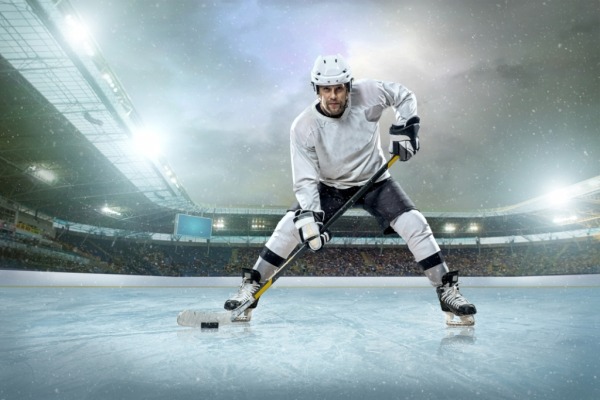Defeating Superior Opponents by Executing Proper Defensive Strategy

Any inferior hockey team in a league can defeat any superior team in that same league, but not only through prayer and supreme effort because, while the inferior team is beseeching a higher authority and totally exerting itself, the opponent could be doing the same, and one action would cancel the other so that the gap in performance will very likely remain, thus causing the usual disastrous results for the inferior team. Intelligence and dedication are the foremost tools which will allow the inferior team to reduce the productivity of the superior team and provide the former its greatest opportunity to win.
Talented offensive teams want to skate freely and play a wide-open game without having their flow hampered. Their players must be slowed, contained, and interrupted in their movements through execution of a sound plan in all three zones, especially emphasizing precision coverage in the defensive zone.
Before the “shot clock” was adopted in basketball, inferior teams often employed the only successful tactic they could in order to compete favorably with and have a legitimate opportunity to defeat a vastly superior opponent. They greatly slowed the game and made it boring by adopting the “stall.” The idea was to use whatever legally works, and the “stall” was very successful in either significantly reducing the deficit of defeat or in producing an upset victory. An inferior team must decide whether it wants to serve as fodder for the competition by playing a “regular” game, thus accommodating the rival’s strength, or to be dedicated to interfering with the factors that produce the superiority of its opponent.
Of course, it is always best to play in one’s offensive zone, but when the superior team breaks out, the inferior team must absolutely have both of its defensemen back, in addition to a well-understood and well-executed plan of having one or two forwards already back (depending upon how many forecheckers are supposed to be committed), and the remaining forward(s) sprinting back into proper defensive coverage. Obviously, a coach must not only tell his players to do this, but also he must explain and demonstrate precisely how to accomplish it and the alternatives to be employed if mistakes are made.
A mainstay of reducing a superior team must be controlling the transition game so that said talented team does not have any odd-man rushes and is forced to work for a score through the inferior team’s defensive zone coverage, a system which must stress containment, slot coverage, rotation, and clearing the puck over the blue line. Such a system would require many pages to explain, and practice for it would need to be precise, methodical, and continuous (not glamourous) - on and off the ice. (Refer to Box Plus Chaser, Defensive Zone Coverage, and Backchecking.)
Whereas most people envision inevitable and/or annihilating losses against some opponents, individuals should embrace methods that realistically offer hope and could shatter the aura of invincibility or at least could reduce the margin of defeat to a superior foe. Many examples in sports history could be cited wherein a seemingly overwhelming competitor was conquered by an intelligent, dedicated, and properly trained rival.
Concentrating on defensive improvement rather than offensive improvement is clearly the approach to follow because a player’s offensive skills and an entire team’s offense can be only slightly elevated through coaching and/or practices, likely over a long period of time (perhaps many seasons). Indeed, highly talented offensive players are “naturals” and are either present on or absent from a roster. Improving a team’s offense simply cannot be accomplished nearly as quickly or as easily as significantly upgrading its defense.
Any player can far more promptly become a solid or superior defensive player than a good offensive one. It is not a matter of cultivating physical abilities in a player (and this I repeat can be lengthy) in order that he become a proficient defensive individual. Rather, it involves coaches understanding how to reduce an opponent and explaining this to the players so that they can use the simple basic abilities everyone has to implement the system. The physical ingredients are already within the players waiting for the coach to add the chemical that will promote success.